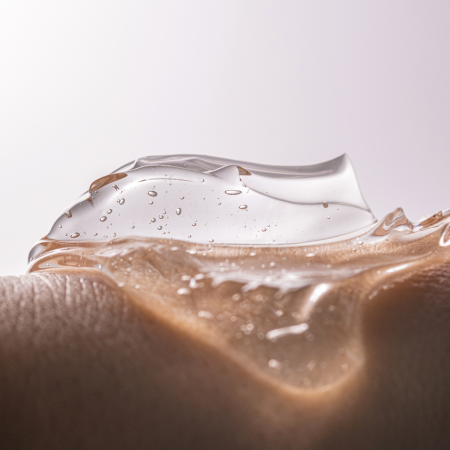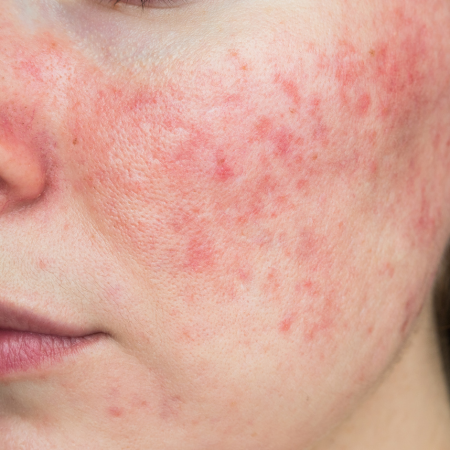Are PDO Thread Lifts Safe? A Breakdown of the Revolutionary Non-Surgical Facelift Option
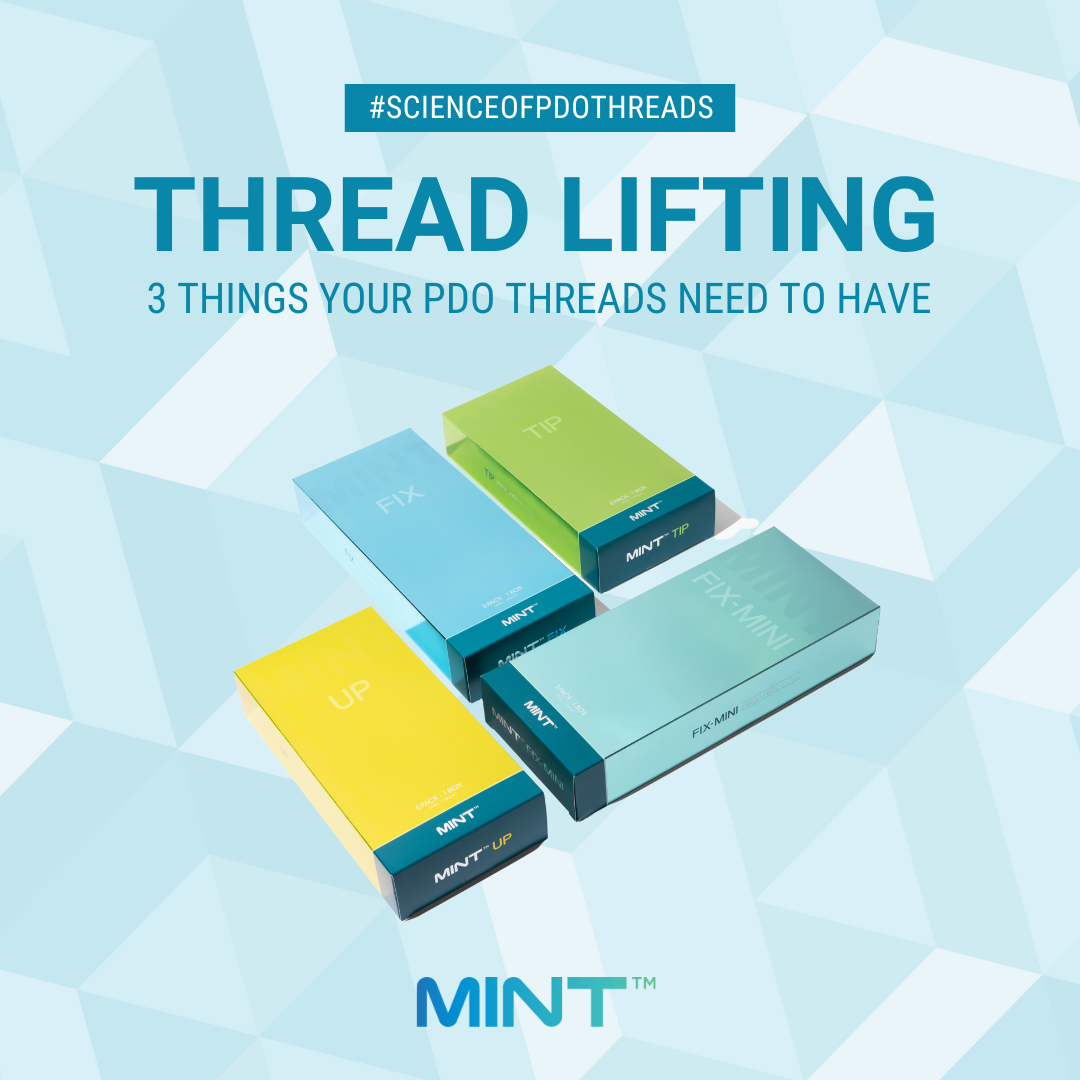
In the world of aesthetic medicine, patients and practitioners alike seek safe and effective alternatives to surgical facelift procedures. PDO (Polydioxanone) threads have emerged as a solution, offering a minimally invasive option for skin lifting and tightening. Exploring the safety aspects of these threads, highlighting their advantages, potential risks, and key considerations for patients considering this innovative treatment, we get to the question: Are thread lifts safe? Compared to a traditional facelift, there is a lower level of risk involved because a thread face lift is non-surgical and less invasive, minimizing the risk of complications.
What are PDO Threads?
PDO threads are medical-grade sutures made from a biodegradable polymer called polydioxanone. Originally used for decades in surgical procedures as a dissolving suture, PDO threading has been used for aesthetic purposes due to their unique lifting capabilities, as well as its ability to stimulate collagen. These threads are inserted into the skin, acting as support structures to lift sagging skin and leaving behind a structure that generates collagen, resulting in a rejuvenated and lifted appearance.
Advantages of PDO Threads
Non-Surgical Approach: One of the primary advantages of a thread face lift is that they offer a non-surgical alternative to traditional facelift procedures. Patients who are hesitant or unable to undergo surgery can achieve significant skin tightening and lifting effects without the associated risks and downtime.
Natural Collagen Stimulation: PDO threading stimulates the production of collagen, a protein responsible for maintaining the skin's elasticity and firmness. As the threads are absorbed by the body over time, they leave behind a framework of collagen fibers, providing long-lasting results.
Versatility: Thread lifts can be used to address various areas of concern, including the face, neck, and body. They can target specific problem areas, such as nasolabial folds, jowls, and marionette lines, delivering precise and tailored results.
How Are PDO Threads Safe?
Biocompatibility: These threads are biocompatible, meaning they are well-tolerated by the body. As mentioned above, the material used in their production has a long history of use in surgical sutures and is considered safe for medical applications.
Minimally Invasive Procedure: Treatments are minimally invasive compared to surgical facelifts. The procedure is performed under local anesthesia, reducing the risks associated with general anesthesia. Additionally, the incisions made for thread insertion are minimal, leading to quicker recovery and fewer complications.
Gradual Absorption: They are gradually absorbed by the body through a process called hydrolysis. This natural breakdown ensures that the threads dissolve harmlessly, eliminating the need for removal procedures. Patients can rest assured that the threads will not remain in their bodies indefinitely.
The Science Behind PDO Thread Safety
The safety behind thread face lifts rest upon three crucial factors: suture material, cannula design, and FDA clearances. Understanding these pillars is key to comprehending the differences between certain threads and how they’re safer than others.
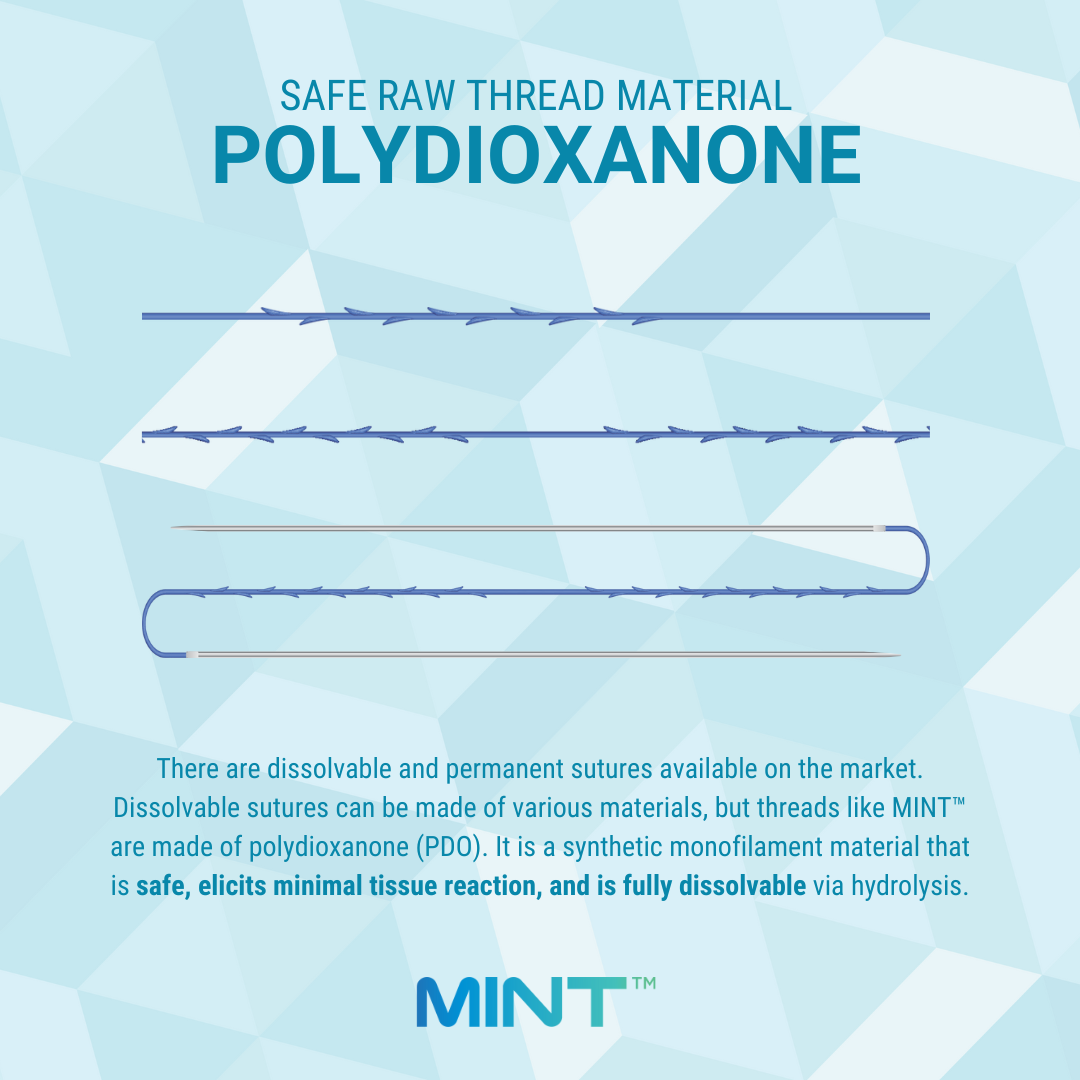
Suture Material
At the core of PDO threads lies the suture material. Polydioxanone biodegradable material offer great benefits for patients seeking a non-permanent solution. As mentioned earlier, these threads are designed to gradually dissolve via hydrolysis. This dissolution ensures that the threads do not remain in the body indefinitely, providing peace of mind to patients, at the same time leaving a structure stimulating collagen growth for long lasting effects.
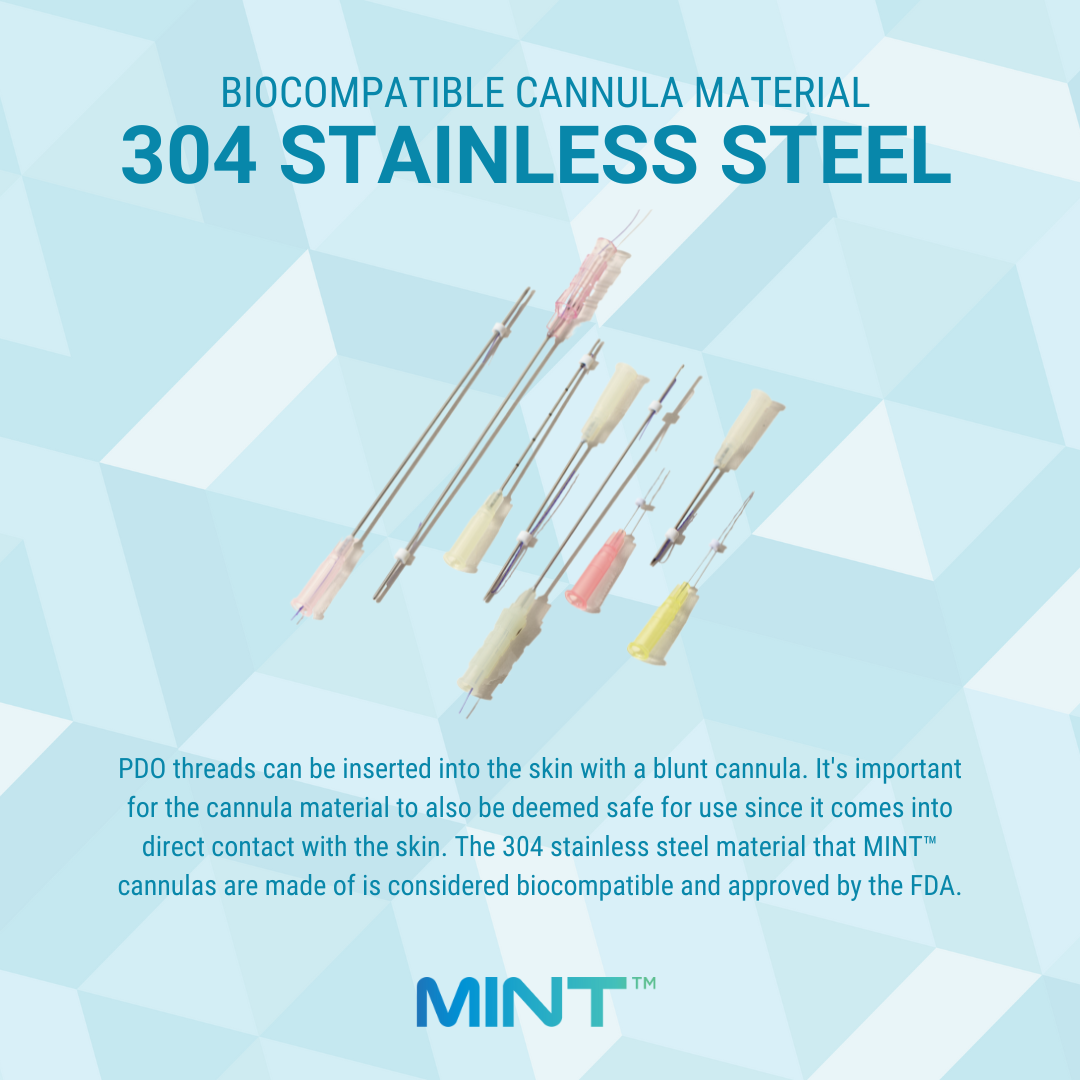
Biocompatible Cannulas
The cannulas used in the insertion of threads are constructed differently depending on the brand of the PDO thread your provider uses. It’s important to look for cannulas with biocompatible 304 stainless steel material. The use of a blunt cannula ensures a safer and more comfortable experience for patients, and unlike sharp needles, blunt cannulas reduce the risk of tissue damage, bruising, and potential nerve injury during the procedure. The biocompatibility of the cannulas gives patient comfort, while their precise design enables your doctor to navigate the treatment area with greater accuracy and control.
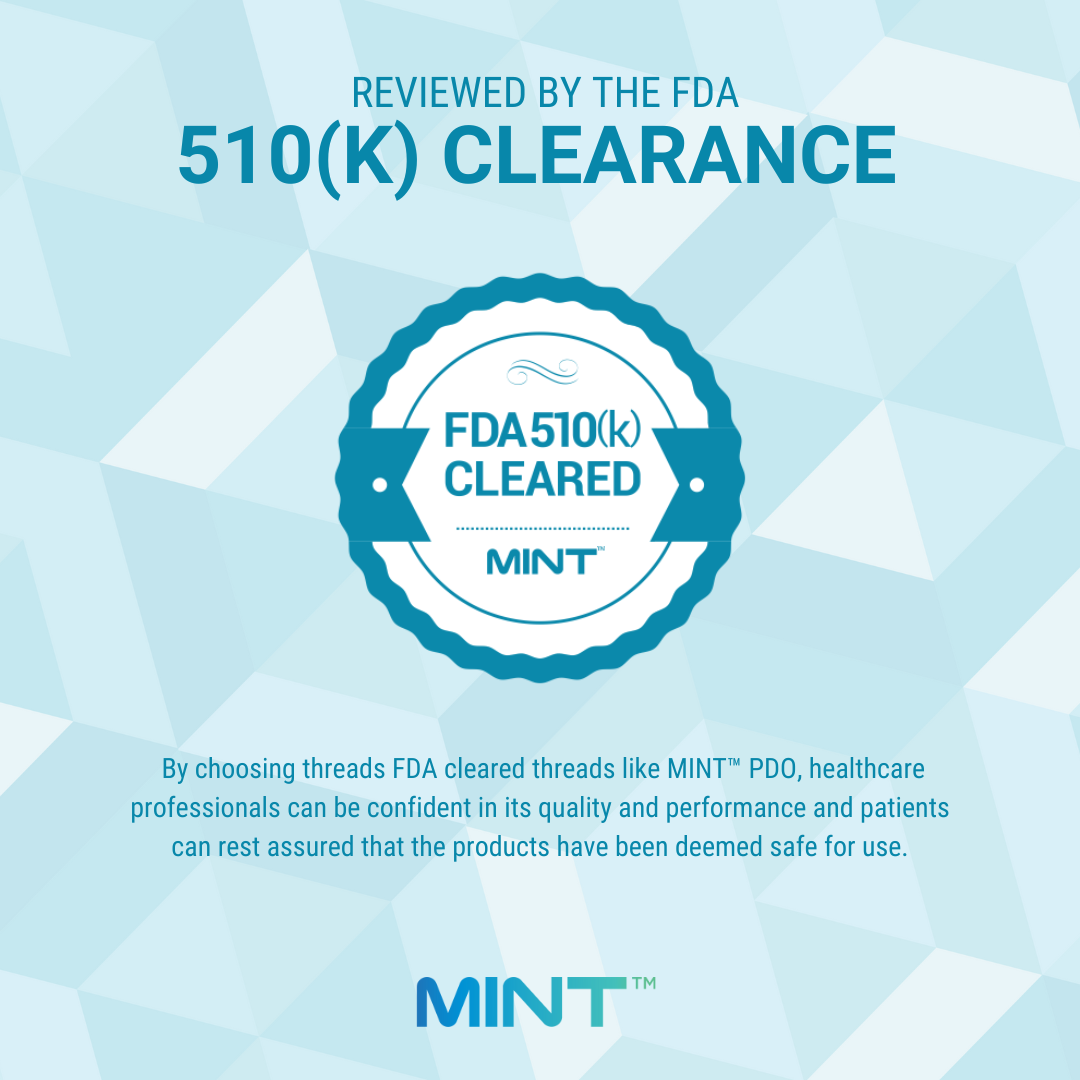
FDA Clearance
The importance of FDA clearances cannot be overstated when it comes to the safety and effectiveness of medical devices. It’s important to do your research on the FDA clearances behind your PDO thread. FDA clearances ensure that the threads have undergone rigorous testing and evaluations to meet the stringent standards set by the Food and Drug Administration, and with many PDO thread companies missing this clearance, it’s important to know which threads your provider uses, and the clearances behind it.
PDO Threading Potential Risks and Side Effects
While PDO thread treatments are generally safe, it’s essential to acknowledge potential risks and side effects associated with the procedure. These can include:
Temporary Bruising and Swelling: Some patients may experience bruising and swelling at the insertion sites. These effects are typically temporary and subside within a few days to a week.
Infection: Although rare, there is a slight risk of infection associated with any procedure involving skin punctures. Strict sterile techniques and post-treatment care instructions can significantly minimize this risk.
Asymmetry or Uneven Results: PDO thread treatments require skill and precision on the part of the practitioner. In some cases, there may be slight asymmetry or unevenness in the results. Choosing an experienced and qualified practitioner can minimize the likelihood of such issues.
Patient Considerations and Consultation
Before undergoing PDO thread treatments, it’s crucial for patients to have a thorough consultation with a qualified practitioner. During this consultation, the practitioner will assess the patient's medical history, skin condition, and aesthetic goals. They will also explain the procedure in detail, including potential risks and side effects, to ensure the patient is well-informed and prepared.
Patients should disclose any pre-existing medical conditions, allergies, or ongoing medications during the consultation. This information will help the practitioner determine if PDO threading is suitable for the patient and tailor the procedure accordingly.
So Really, Are PDO Thread Lifts Safe?
PDO threads have revolutionized the field of aesthetic medicine by offering a safe and effective non-surgical facelift option. With their biocompatibility, minimally invasive nature, and gradual absorption, they provide patients with a viable alternative to surgical procedures. While like any other medical procedure, potential risks and side effects exist, these can be minimized through proper patient selection, skilled practitioners, and adherence to post-treatment care instructions.
If you are considering a thread face lift, consult with a qualified practitioner who will guide you through the process and address any concerns you may have. With the right approach and an experienced professional, thread lifts can deliver remarkable results, helping you rediscover your youth.
